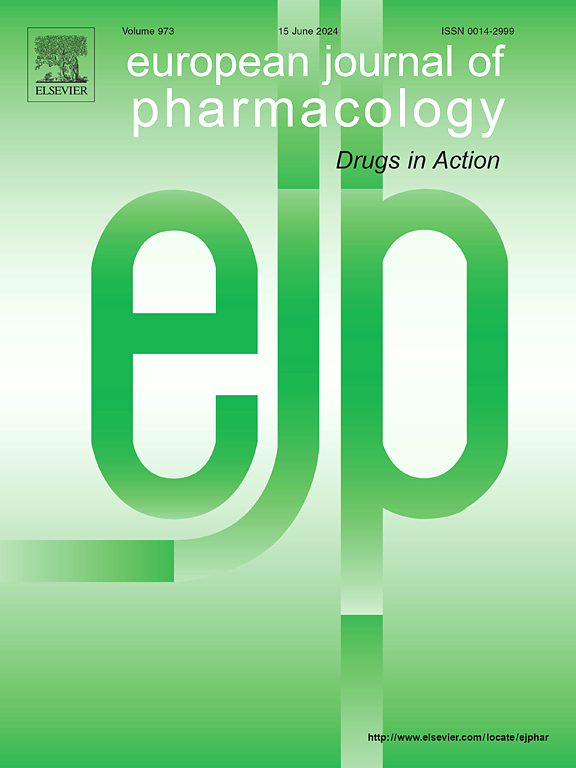从潜在的药物靶点到遗传风险因素解码主动脉夹层:一项孟德尔随机研究。
IF 4.2
3区 医学
Q1 PHARMACOLOGY & PHARMACY
引用次数: 0
摘要
目的:主动脉夹层(aortic dissection, AD)被定义为中膜破坏和主动脉壁分离,可能是致命的。到目前为止,还没有一种临床药物能够有效地预防阿尔茨海默病的发展。因此,识别与AD相关的危险因素并发现潜在的治疗靶点是势在必行的。方法:为了确定AD的治疗靶点,我们使用了来自eQTLgen联盟的顺式表达数量性状位点(cis-eQTL)数据和来自Finngen联盟的全基因组关联分析(GWAS)数据进行孟德尔随机化(MR)。共定位分析筛选了该疾病中具有共同snp的药物靶点。药物预测和分子对接验证了靶点的药用价值。最后,进行中介分析,探讨药物靶点如何影响AD的发展。结果:利用磁共振技术,我们鉴定出76个具有显著相关性的基因。随后的共定位分析揭示了5个与AD共享遗传信号的药物靶点。进行了药物预测分析,分子对接表明预测药物与相关基因之间存在强大的关联。此外,我们的研究结果表明,舒张压、臀围和升主动脉直径可能是AD发生的潜在介导因素。结论:本研究确定了5个潜在的AD药物靶点。此外,通过药物预测和分子对接来评估这些靶点的治疗潜力。本研究结果有望为阿尔茨海默病的预测提供有价值的筛选指标,并促进阿尔茨海默病药物开发的进展。本文章由计算机程序翻译,如有差异,请以英文原文为准。
Decoding aortic dissection from potential drug targets to genetic risk factors: A Mendelian randomization study
Aims
The aortic dissection (AD) is defined as the destruction of the tunica media and separation of the aortic wall, which can be fatal. To date, there is no clinical medication that has been developed to effectively prevent the progression of AD. Therefore, it is imperative to identify risk factors associated with AD and to discover potential therapeutic targets.
Methods
To identify therapeutic targets for AD, we used cis-expression quantitative trait loci (cis-eQTL) data from the eQTLgen Consortium and genome-wide association analysis (GWAS) data from the Finngen Consortium for Mendelian randomization (MR). Colocalization analysis screened drug targets with shared SNPs in the disease. Drug prediction and molecular docking verified the targets' medicinal value. Finally, mediation analysis was performed to explore how drug targets might influence AD development.
Results
Using MR, we identified 76 genes exhibiting significant associations. Subsequent colocalization analysis revealed five drug targets sharing genetic signals with AD. Drug prediction analyses were conducted, and molecular docking demonstrated a robust association between the predicted drugs and the implicated genes. Furthermore, our findings suggest that diastolic blood pressure, hip circumference and ascending aorta diameter may serve as potential mediating factors in the development of AD.
Conclusion
This study identified five potential pharmacological targets for AD. Additionally, drug prediction and molecular docking were employed to assess the therapeutic potential of these targets. The findings of this research are anticipated to offer valuable screening indicators for AD prediction and facilitate advancements in AD drug development.
求助全文
通过发布文献求助,成功后即可免费获取论文全文。
去求助
来源期刊
CiteScore
9.00
自引率
0.00%
发文量
572
审稿时长
34 days
期刊介绍:
The European Journal of Pharmacology publishes research papers covering all aspects of experimental pharmacology with focus on the mechanism of action of structurally identified compounds affecting biological systems.
The scope includes:
Behavioural pharmacology
Neuropharmacology and analgesia
Cardiovascular pharmacology
Pulmonary, gastrointestinal and urogenital pharmacology
Endocrine pharmacology
Immunopharmacology and inflammation
Molecular and cellular pharmacology
Regenerative pharmacology
Biologicals and biotherapeutics
Translational pharmacology
Nutriceutical pharmacology.

 求助内容:
求助内容: 应助结果提醒方式:
应助结果提醒方式:


